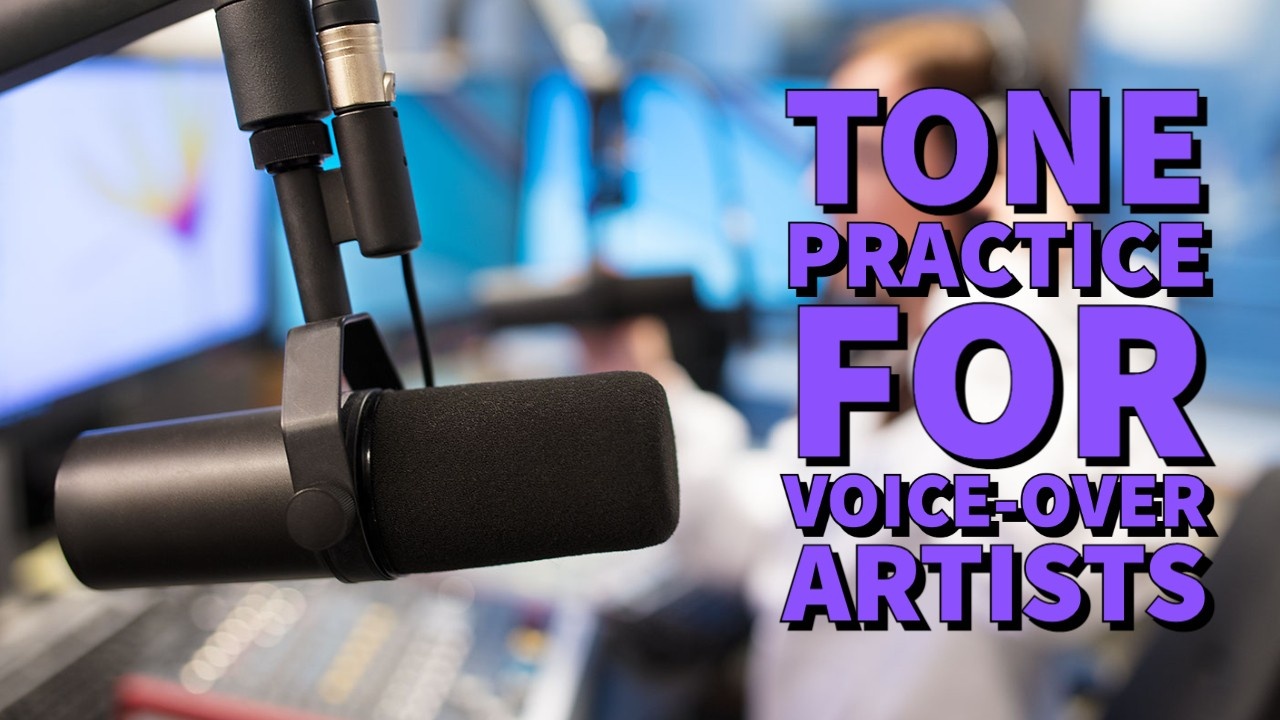Tone Practice for Voice-Over Artists
Jun 29, 2021
If you want to become a voice-over (VO) artist, chances are you’ve been researching the basics, such as: how to get into voice acting; where to find voice acting classes; or simply how to be a good voice-over artist. Sound like you?
Some of the fundamental skills of a VO artist include: developing a unique, easily distinguishable voice; sounding credible; and fostering a pitch and tone that is easy on the ear. In addition, your rhythm should be calm and measured, without rushing, your reading flow steady, with crystal-clear pronunciation, and a confident delivery. Certain projects may require many hours of recording, like audiobooks, documentaries, or biographies, and these require a high degree of stamina and patience – which are specific qualities you develop through regular training and years of experience.
The demand for VO artists is high, as there are so many types of industries that require professionals to voice their videos. Each of these industries requires the voice actor to use distinct tones.
Some examples are:
- Corporate videos
- TV commercials
- Infomercials
- Internet ads
- Online tutorials
- Video games
- Audiobooks
- Exercise and inspirational videos
- Training and educational videos
- Announcements for airports, stadiums, train stations, malls, and other public places
- Narration for biographies, children’s books, audiobooks, and more
One of the most recognized VO styles is a fully-voiced reading that contains several characters (In a conversational style). Many clients want to save time, energy, and money and look for VO artists that are versatile enough to play multiple characters.
By using different voices, tones, alternating inflections, resonance, and by adding a unique spin on each character, a VO artist can bring to life distinct voices. To do so, you will need to train your voice to transform into separate personalities.
As a full-time non-union voiceover artist with more than 20 years of experience in the voice acting and live theatre spheres, I can tell you that every aspiring voice actor should practice using multiple types of voice-over styles or tones, together and by themselves. This will broaden your ability to tell an effective story and help you adapt to the various industries you will work for. Being able to evoke a range of emotions is crucial to bringing characters to life. Explore how to start voice acting by studying the following six types of styles.
Voice-over Tones
- Authoritative - Practice sounding confident, experienced, and powerful by using downward inflection and adjusting your tempo and pauses. It’s helpful to practice altering the way you speak, your resonance, and your articulation, and incorporate body language, which will ultimately reflect in your tone.
- Conversational - Since 92 percent of voice-over artists work in narration, such as for a documentary, biography, audio, or children’s book, you need to be able to sound approachable, friendly, sincere, and extemporaneous. When you express emotion on your face, it comes through in the way you speak, so keep this in mind when practicing a conversational tone.
- Eloquent - Many voice-over artists lend their voices to training videos, promotional material, or human resources videos. They also work as trade show announcers. These corporate projects require eloquence, which you can develop by practicing a precise, refined, and sophisticated tone.
- Enticing - Whether you get hired to be the voice of an animated character or work in the very lucrative and highly competitive commercial industry, at some point you may have to sound enticing. Imagine an intimate, seductive, tempting situation and tweak your tone to match the situation. Rehearse this in varying degrees of intensity.
- Inspiring - Exercise videos or motivational scripts may call for an inspiring tone. Imagine an inspiring situation and experiment with sounding courageous, encouraging, passionate, and talking in a deeper voice. Pay attention to the pauses, pushes, pull, and range. An idea that can help you accomplish this, for example, is sending a thought into the night and letting it hang there.
- Nurturing - A character that portrays a grandparent, mother, teacher, or caring friend may require a nurturing tone. Sounding caring, compassionate, and sympathetic is vital to making a nurturing character believable.
A key element to good voice acting is mastering different voice-over tones. Getting into voice acting requires a commitment to regular voice acting training. Practice makes perfect, so the more dedicated you are to honing your craft, the better your chances in the industry will be.
By rehearsing these contrasting tones, individually and together, you develop the skills and techniques needed for various types of voice acting and acquire the versatility and confidence to excel as a voice-over artist.
To learn more about voice acting or learn from my over two decades in the industry, check out my coaching services here: https://www.avosjourney.com/1-on-1-voice-over-coaching






